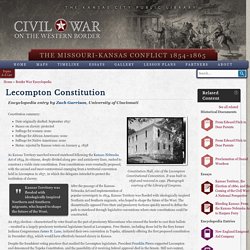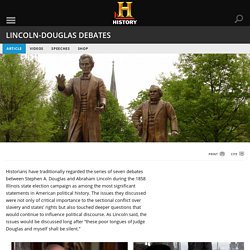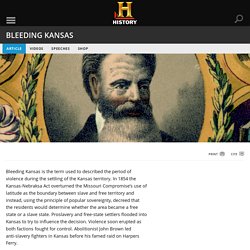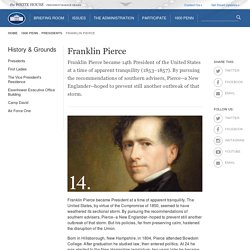

10 Things You Might Not Know About Diabetes. Insulinresistance. Gfgg. Redirecting. Why do I need to register or sign in for WebMD to save?

We will provide you with a dropdown of all your saved articles when you are registered and signed in. Diabetes is a number of diseases that involve problems with the hormone insulin. While not everyone with type 2 diabetes is overweight, obesity and lack of physical activity are two of the most common causes of this form of diabetes. Redirecting. Knowledge center home » diabetes » what is diabetes?

Diabetes, often referred to by doctors as diabetes mellitus, describes a group of metabolic diseases in which the person has high blood glucose (blood sugar), either because insulin production is inadequate, or because the body's cells do not respond properly to insulin, or both. Patients with high blood sugar will typically experience polyuria (frequent urination), they will become increasingly thirsty (polydipsia) and hungry (polyphagia). Fast facts on diabetes Here are some key points about diabetes.
More detail and supporting information is in the main article. Diabetes is a long-term condition that causes high blood sugar levels.In 2013 it was estimated that over 382 million people throughout the world had diabetes (Williams textbook of endocrinology).Type 1 Diabetes - the body does not produce insulin. Redirecting. Learn how to prevent or delay type 2 diabetes by losing a small amount of weight.

To get started, use these tips to help you move more, make healthy food choices, and track your progress. Reduce Portion Sizes Portion size is the amount of food you eat, such as 1 cup of fruit or 6 ounces of meat. If you are trying to eat smaller portions, eat a half of a bagel instead of a whole bagel or have a 3-ounce hamburger instead of a 6-ounce hamburger. Mexican American War Buena Vista. About Thoreau: Civil Disobedience. American Experience . John Brown's Holy War . People & Events. People & Events The Secret Six One night in May, 1858, Franklin Sanborn called for a meeting at the American House Hotel in Boston.

John Brown was in town; it was time to go over the plan. Civil War on the Western Border: The Missouri-Kansas Conflict, 1854-1865. Constitution Hall, site of the Lecompton Constitutional Convention.

It was built in 1856 and restored in 1991. Photograph courtesy of the Library of Congress. Constitution summary: Date originally drafted: September 1857Stance on slavery: protectedSuffrage for women: noneSuffrage for African Americans: noneSuffrage for Native Americans: noneStatus: rejected by Kansas voters on January 4, 1858. Lincoln-Douglas Debates. What is often overlooked is that the debates were part of a larger campaign, that they were designed to achieve certain immediate political objectives, and that they reflected the characteristics of mid-nineteenth-century political rhetoric.

Douglas, a member of Congress since 1843 and a nationally prominent spokesman for the Democratic party, was seeking reelection to a third term in the U.S. Senate, and Lincoln was running for Douglas’s Senate seat as a Republican. Because of Douglas’s political stature, the campaign attracted national attention. Stephen A Douglas headshot[1] Bleeding Kansas - Facts & Summary - HISTORY.com. Said to have been coined by Horace Greeley’s New York Tribune, the label “Bleeding Kansas” was first fixed on that strife-ridden territory by antislavery publicists.

Dred Scott. Dred Scott first went to trial to sue for his freedom in 1847.

Ten years later, after a decade of appeals and court reversals, his case was finally brought before the United States Supreme Court. In what is perhaps the most infamous case in its history, the court decided that all people of African ancestry -- slaves as well as those who were free -- could never become citizens of the United States and therefore could not sue in federal court. The court also ruled that the federal government did not have the power to prohibit slavery in its territories. Kansas-Nebraska Act.
This 1854 bill to organize western territories became part of the political whirlwind of sectionalism and railroad building, splitting two major political parties and helping to create another, as well as worsening North-South relations.

On January 4, 1854, Stephen A. Ostend Manifesto. Redirecting. Redirecting. Franklin Pierce became President at a time of apparent tranquility.

Redirecting. Uncle Tom's Cabin was initially released in serial format in the National Era, a weekly newspaper, from June 5, 1851-April 1, 1852. See HERE for the text of Uncle Tom’s Cabin as originally released in The National Era. You will find each chapter, followed by scholarly commentary, and links to Stowe’s A Key to Uncle Tom’s Cabin and related materials. Click HERE to see photos from the 2014 Marathon Reading of Uncle Tom’s Cabin. Click HERE to visit the award-winning website, Uncle Tom's Cabin: Generating a Rising Tide of Responsibility to End the Institution of Slavery. Encyclopedia Britannica. Compromise of 1850. Henry Clay, U.S. senator from Kentucky, was determined to find a solution. Lewis Cass - People - Department History - Office of the Historian.
Introduction Lewis Cass was appointed Secretary of State by President James Buchanan on March 6, 1857, and assumed office the same day. He served until December 14, 1860. Lewis Cass, 22nd Secretary of State Rise to Prominence Cass was born to a farming family in Exeter, New Hampshire. Redirecting. The Great Triumvirate was the name given to three powerful legislators, Henry Clay, Daniel Webster, and John C. Calhoun, who dominated American politics from the War of 1812 until their deaths in the early 1850s. Each man represented a particular section of the nation. And each was the primary advocate for that region's most important interests. Our Documents - Northwest Ordinance (1787)
Officially titled An Ordinance for the Government of the Territory of the United States North-West of the River Ohio, the Northwest Ordinance was passed on July 13, 1787. The Northwest Ordinance, adopted July 13, 1787, by the Second Continental Congress, chartered a government for the Northwest Territory, provided a method for admitting new states to the Union from the territory, and listed a bill of rights guaranteed in the territory. Henry Clay. Secession Crisis. Fugitive Slave Act of 1793. Redirecting. Harriet Tubman. The Underground Railroad. African American Odyssey: Slavery. Africans in America/Part 3/Nat Turner's Rebellion. Redirecting. Slaves being put up for auction were kept in pens like this one in Alexandria, Virginia — just a few miles from Washington, D.C.
"The Peculiar Institution" is slavery. Its history in America begins with the earliest European settlements and ends with the Civil War. Redirecting. Northerners and Southerners disputed sharply whether the territories wrested from Mexico should be opened to slavery, and some Southerners even threatened secession. Standing firm, Zachary Taylor was prepared to hold the Union together by armed force rather than by compromise. Redirecting. The antislavery declaration reflected the national political situation. Redirecting. The Treaty of Guadalupe Hidalgo. Bear Flag Revolt - Facts & Summary - HISTORY.com. Redirecting. Civil Disobedience by Henry David Thoreau.
Redirecting. Pierce f[1] 1850compromise big[1] Lewis Cass circa 1855[1] What was the Underground Railroad[1] Blackwarrior lg[1] Mexican–American War (without Scott's Campaign) en svg[1] Aa polk wilmot 1 m[1] 269998991 orig[1] Zachary Taylor half plate daguerreotype c1843 45[1] Jb colonial stono 2 m[1]